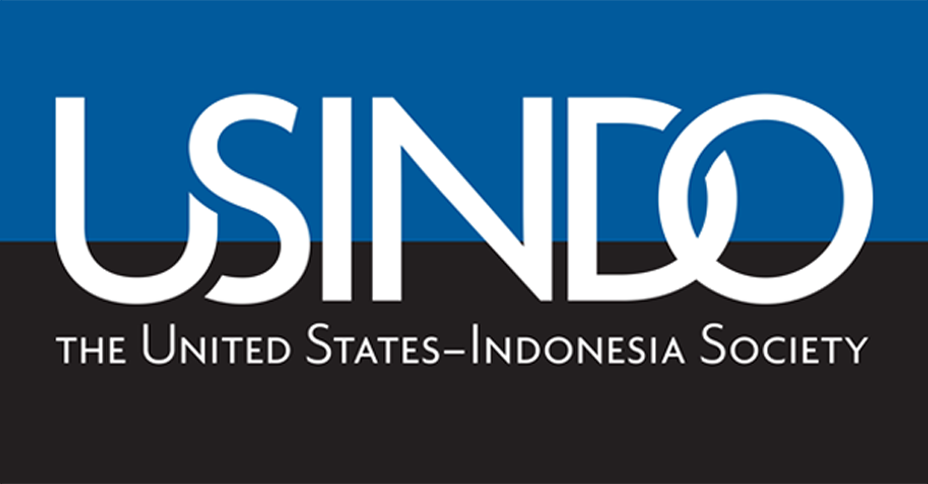In the Aftermath of Peace: Hope and Struggle in Aceh
On December 7th, Sandeep Ray, a former USINDO Summer Studies Alumnus and talented film maker presented at USINDO his new documentary “In the Aftermath of Peace: Hope and Struggle in Aceh.”
Before screening the documentary, Ray gave some background on the film. Ray became very familiar with Aceh’s current circumstances while working with the World Bank Conflict Team in the region. The short documentary offers a focused account of the peace process from the viewpoint of certain individuals.
The documentary begins with a brief background on the 30-year conflict in Aceh and the current efforts to consolidate peace in the region. The film is divided into four sections, ex-combatants, the widows of war, differing generational views of the conflict, and building capacity, and explores important questions of post-conflict development. In particular, through interviews with former separatists, widows, village leaders, and government officials, it explores issues of compensation, reintegration of ex-combatants, reconstruction assistance, further conflict, and building capacity moving forward.
The documentary portrays a complex situation; while the peace process in Aceh has been a success that can be used as an example for other parts of Indonesia and the world, there is still a long road to recovery. The film highlights the lack of infrastructure, capacity, and trust in the government that still exists in the region today, and their potential impacts on the post-conflict development. These issues were further illustrated by the discovery of a terrorist camp in Aceh in early 2010. Although this camp was unrelated to the separatist Free Aceh Movement (GAM), the government’s attack on the camp revealed attitudes of mistrust among the Acehnese who worried that this camp would become an excuse for heightened governmental security measures in the region. The film concludes with Sidney Jones, Senior Advisor at the International Crisis Group, warning that although Aceh has been portrayed as a success story, it may cause those involved in the post-conflict process to lose focus on the work that still needs to be done.
Following the screening, Ray answered questions from the audience about the film and his impressions of Aceh.
Q. What is being done to build trust between the government and local people?
Ray referred to the Village Leader Training Program, an initiative highlighted in the movie, which has the dual intent of capacity building and providing a space for open dialogue between villagers and the government on issues in the region. In addition, all of the international donors have their own socialization plans including efforts like a post conflict radio program.
Q. What are the attitudes of other Indonesians toward Aceh?
While Ray thinks other Indonesians have a generally positive attitude toward Aceh, viewing it as a success story, he expressed concern that they do not realize the enormity of the task of rebuilding. Furthermore, international donors have expressed an interest in donating specifically to Tsunami victims specifically which has created a tension between tsunami victims and conflict victims, further complicating the process.
Q. Who was this documentary intended for?
Ray hopes that anyone interested in Aceh can view the documentary; however, it is certainly more intended for people interested in the complexities of reintegration and the aftermath of peace. In particular, he wanted to address the misconceptions about the terrorist camp found in February of 2010 and show donors a complete and balanced picture of the situation in Aceh.
Q. Did you see tensions within GAM? How important was the exile of (GAM leader) Hasan di Tiro during the war?
Hasan was a god-like figure for many Acehnese so his exile had significant impact. Ray also commented that there is tension within the movement, especially in terms of the distribution of compensation and between returning members of the movement who have been living in Malaysia and those that did not leave Aceh.
Q. Has the Memorandum of Understanding that called for mineral sharing made a difference in terms of the economic development of the region?
Ray believes it is too early to tell; the full extent of the law will be seen over the next two decades. While it could have a huge impact, it is also possible that resources may begin to run out, curbing the influence of the Memorandum.
Q. What was the Acehnese’ attitude toward the terrorist camp discovered this year?
Many people had no prior knowledge of the terrorist camp, which was deep in the jungle. The main reaction to the government’s attack of the camp was the worry that the military would use the camp as an excuse to move into the area permanently and revert to old tactics such as the use of ID cards.
Q. With respect to the tensions between the regional and central government, to what extent has Aceh joined with the rest of Indonesia?
Ray commented that it Aceh has become closer to the Indonesian identity and that the success of peace there has been held up as an example for other regions. The idea of having Acehnese leaders help with peace talks in Papua reflects the closer ties between Aceh and the rest of Indonesia that are developing. Furthermore, there are many pilot programs regarding disaster relief in Aceh which if they are successful are implemented in other areas.
Q. What is the outlook for Aceh? How do we characterize the situation there now?
From the peace point of view, Ray believes Aceh is a success, and he is not worried about the region relapsing into conflict. However, there is still a lot of work that needs to be done in terms of rebuilding from poverty, and he is concerned that people will lose interest because the basic goal, peace, has been met.
For more information about Sandeep Ray and his films, visit https://sandeepray.com/. Ray is happy to share the movie for use in classrooms and other educational settings.
